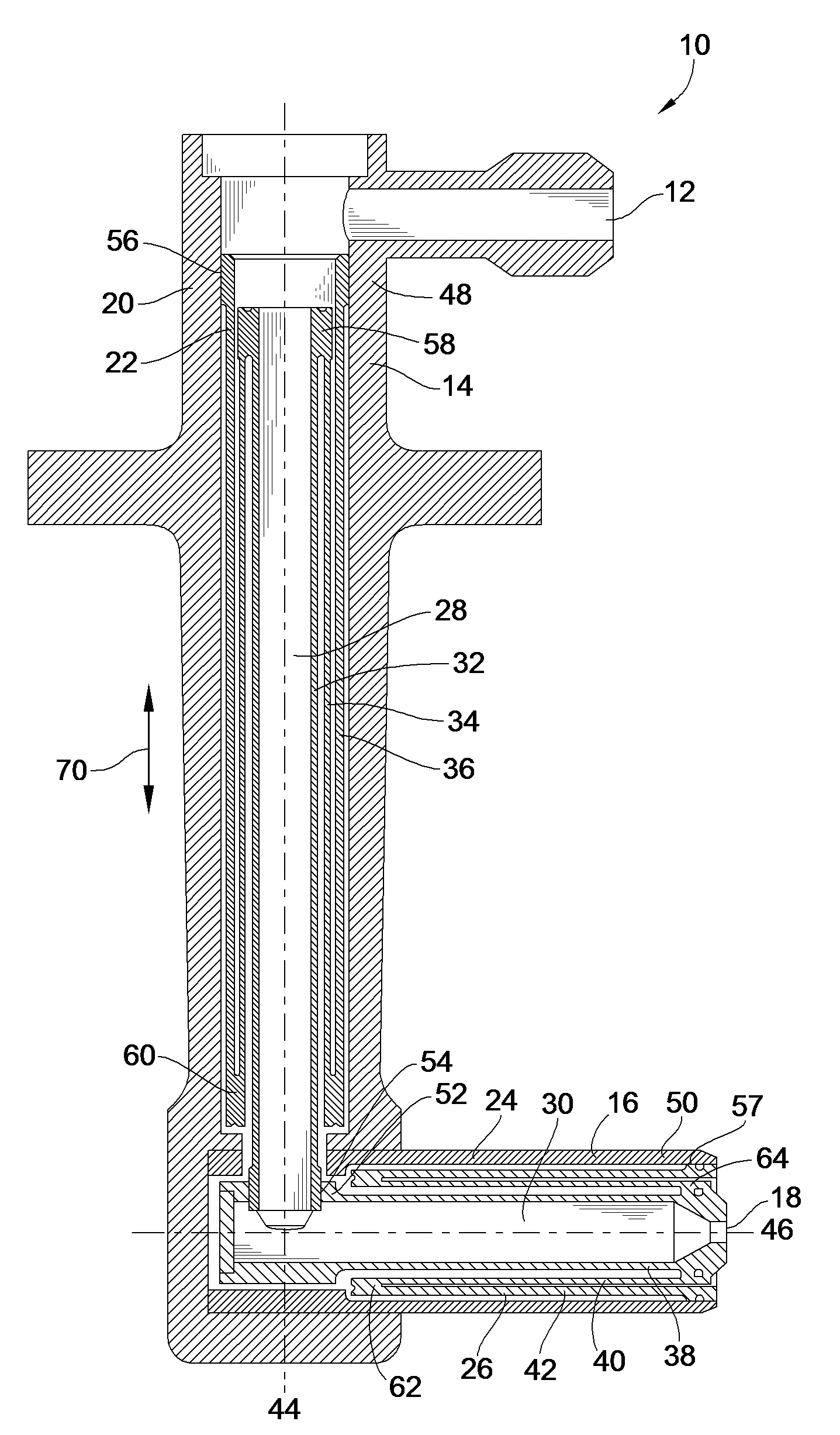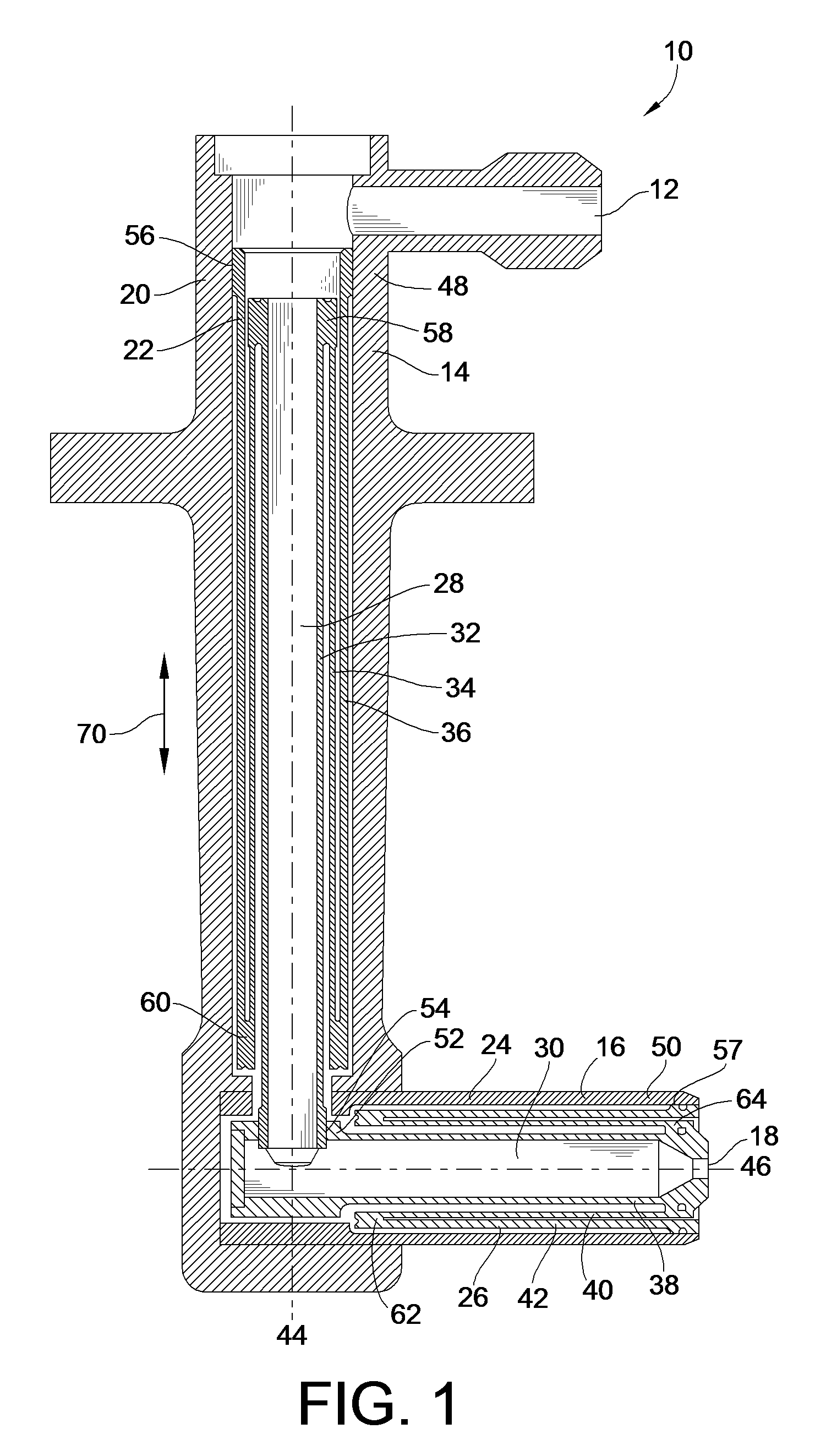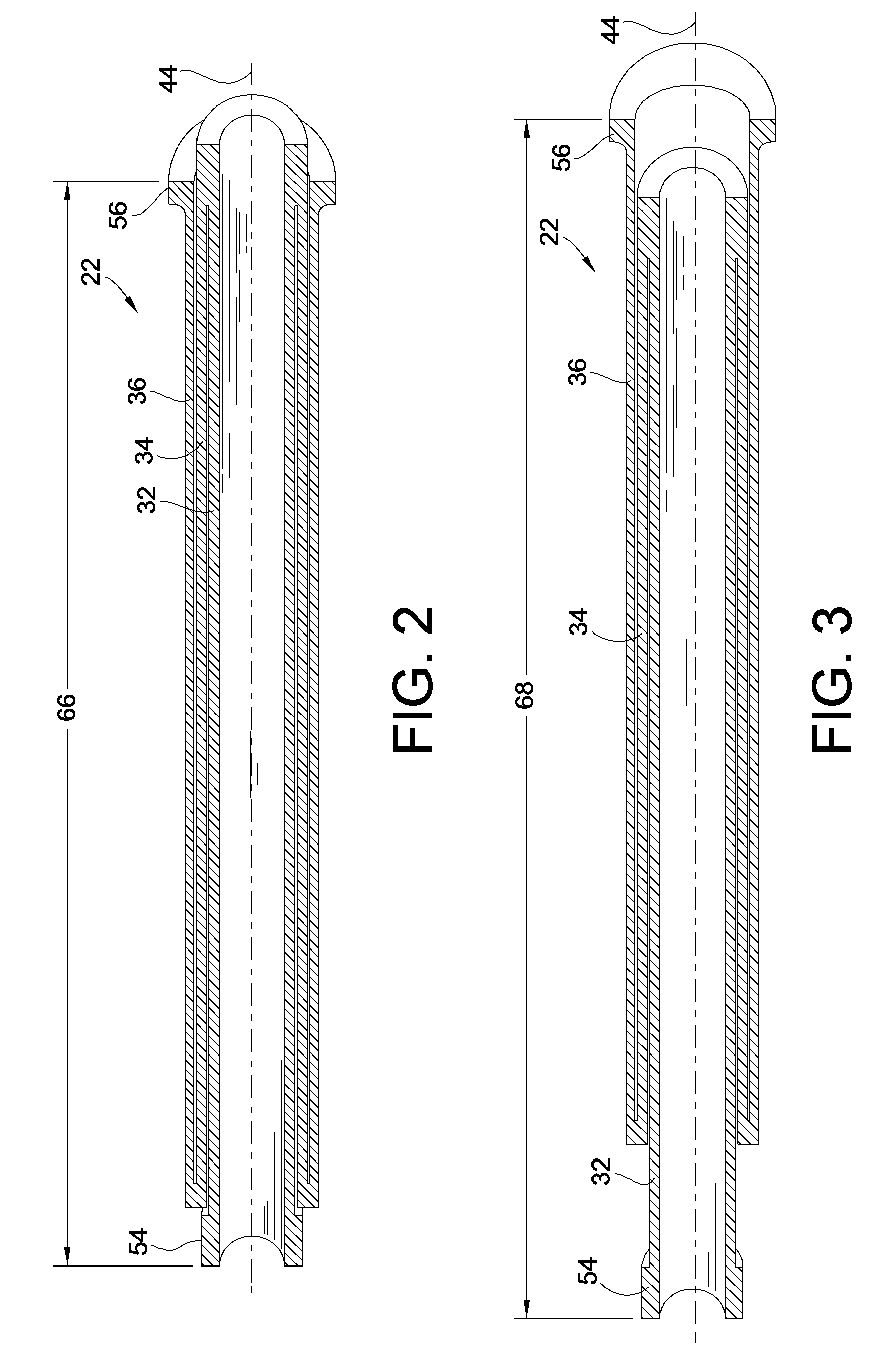Multi-tubular fluid transfer conduit
a fluid transfer conduit and tubular technology, applied in the direction of branching pipes, combustion types, lighting and heating apparatuses, etc., can solve the problems of mechanical stress, structural failure of the conduit, thermal expansion, etc., and achieve the effect of better thermal insulation properties and better accommodative structural stresses
- Summary
- Abstract
- Description
- Claims
- Application Information
AI Technical Summary
Benefits of technology
Problems solved by technology
Method used
Image
Examples
Embodiment Construction
[0034]FIG. 1 shows a cross sectional view of a fuel nozzle 10 including a fuel transfer conduit 22 according to an embodiment of the present invention. The fuel nozzle 10 can be implemented in a gas turbine system to inject fuel into a combustion chamber, wherein fuel is mixed with air and burned at high temperatures while maintaining a near static pressure. The gas temperature required in a turbine varies according to engine speed, so the combustion chamber must be capable of a stable and efficient combustion over a wide range of operating conditions that can be maintained for extended periods. The temperature of air leaving a primary combustion zone can be approximately 1800° C. and 2000° C. The fuel nozzle 10 includes an improved fuel transfer conduit 22, which can better accommodate thermally induced structural stresses and better shield fuel from the severe temperatures of the gas turbine system.
[0035]Although the fuel transfer conduit 22 in this embodiment is used in the fuel ...
PUM
 Login to View More
Login to View More Abstract
Description
Claims
Application Information
 Login to View More
Login to View More - R&D
- Intellectual Property
- Life Sciences
- Materials
- Tech Scout
- Unparalleled Data Quality
- Higher Quality Content
- 60% Fewer Hallucinations
Browse by: Latest US Patents, China's latest patents, Technical Efficacy Thesaurus, Application Domain, Technology Topic, Popular Technical Reports.
© 2025 PatSnap. All rights reserved.Legal|Privacy policy|Modern Slavery Act Transparency Statement|Sitemap|About US| Contact US: help@patsnap.com



